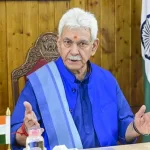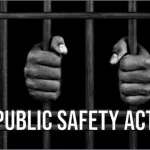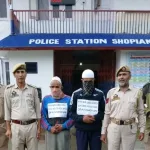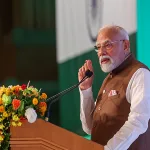FRAGRANCE OF IDEAS
In the elections to the Lok Sabha in November 1989, the BJP emerged as the third largest political party with 86 seats. The BJP reiterated its commitment to the construction of the Ram Temple at Ayodhya in its subsequent statements, resolutions and public postures. In 1990, the party decided to undertake the “rath yatra” from Somnath in Gujarat to Ayodhya in UP under the leadership of L K Advani. The yatra started from Somnath on September 25, 1990. It got a huge and unprecedented response from the people in all the states wherefrom the yatra passed. However, when the yatra crossed UP and reached Samastipur in Bihar, the Lalu Prasad Yadav government in consultation with the then Prime Minister, V.P. Singh arrested L.K. Advani and put him under house arrest. Thus the Rath Yatra ended in Bihar. This development led BJP to withdraw its support from the V.P.Singh government at the centre and accordingly the government fell. It gave birth to a new socio-political scenario in the country necessitating new strategies for the success of the movement.
The top leadership of the RSS-VHP-BJP combine discussed the issue afresh and made up its mind to take all steps necessary to re-energise the movement for the liberation of the disputed site. An ambitious plan of “Kar-seva” at the Ramjanambhumi was finalised. The Mulayam Singh Yadav government in UP made serious plans to thwart the “Kar-seva” programme. It accordingly decided to ban entry of any Karsevaks to UP from any other state. Ayodhya was made a complete fortress and shoot at sight orders were issued. Inspite of all restrictions, hundreds of Karsevaks from different parts of the country succeeded in reaching Ayodhya and were mercilessly beaten by the armed state police in the lanes, by-lanes and streets of Ayodhya. The official figures suggest that 50 Karsevaks were killed in the police firing while hundreds of them were wounded. The survivors among the wounded confirmed that hundreds of Karsevaks were killed in the police brutalities. Among the killed were the brave two brothers of Kolkata, popularly known as Kothari brothers.
These incidents created new challenges for the Ramjanambhumi movement. It was generally but seriously felt that there was an urgent need to work for change of governments at the Centre and in UP at least. In 1991, the changes took place in a big way during the general elections and the state elections. While Congress emerged as the largest party at the Centre, BJP for the first time became the second largest party. PV Narsimha Rao assumed the Prime Minister’s office and ran the minority government at the centre. In UP, BJP won the elections also for the first time and Kalyan Singh, its leader, assumed the office of the Chief Minister of UP.
The Ramjanambhumi movement brought a great churning in the socio-political scenario of the country; and politicians, media, intellectuals, thinkers, writers and other social activists formally joined debates on the movement for liberation of Ram-Janambhumi. It was during this period that some important politicians and thinkers within the country suggested that the courts of law should be asked to decide the matter of the disputed site in Ayodhya. It had mixed reactions from all concerned. In the meantime, the Ramjanambhumi Nyas urged the government in UP to allow it to hold further Karseva at the disputed site for the construction of the Ram Mandir. The government showed willingness to grant permission but the Muslim side went to the Supreme Court of India with the appeal that the permission for the Karseva should be stopped. On the basis of the affidavit given by the Kalyan Singh government, the Supreme Court gave its go-ahead to the Karseva for performing the necessary ritual on the disputed site of 2.77 acres in Ayodhya. Accordingly, the Karsevaks reached Ayodhya on 6 December, 1992.
When the programme was going as per the laid down schedule in Ayodhya, suddenly some emotionally charged Karsevaks climbed the tomb of the disputed structure. They started pulling the structure down. When the UP Chief Minister Kalyan Singh was informed about it, he didn’t give permission to shoot the Karsevaks, which he explained later would have enacted one more ‘Jalianwalabag’. Within five hours, the whole structure was razed to the ground by the mob; and taking full responsibility, Kalyan Singh tendered his resignation as the Chief Minister of the State. His resignation was accepted and the Presidential rule was declared in UP. In addition to this, three more BJP State governments in MP, Rajasthan and HP were also dismissed by the Central government. Atal Bihari Vajpayee, the tallest leader of the then opposition in the Parliament came forward and took public stage to represent views of BJP on the demolition and boldly explained the position of the Ramjanambhumi movement on the issue.
BJP surely paid a heavy price for the demolition of the disputed structure. Kalyan Singh was held responsible for the dereliction of duties by the apex court but he stood his ground and said that it was not possible for him to give the shoot-out orders on the Karsevaks and would be ready to face the consequences. Accordingly, the Supreme Court awarded him the one-day confinement symbolically, which he underwent with grace and pride.
Again, the RSS-VHP-BJP combine decided to fight the case in the court of law as and when required besides keeping the tempo of the movement aloud. All these developments dragged the whole issue of the Ramjanambhumi movement to the corridors of the court of law for ever for a final decision on the issue. For the next twenty five years, hard battles were fought in the various courts of law, the lower courts, High courts and the Supreme Court. What needs also to be noted here is that over these twenty-five years, the socio-political scenario in the country witnessed a sea change. The BJP emerged as the largest political party in the country and the current dispensation headed by PM Narendra Modi showed great guts to solve the all important pending national issues before the nation, Ramjanambhumi issue included.
In the meantime, the Allahabad High Court in its 2010 judgement divided the Ramjanmabhoomi-Babri Masjid site into three parts, with Sunni Waqf board, Nirmohi Akhara, and Ram Lalla each receiving a third of it. The HC ruled that the central dome of the demolished three-dome structure where the idol of Ram Lalla had been kept in a makeshift temple was the birthplace of Ram. The judgement was not accepted by any side as a genuine judgement and was thus challenged in the Supreme Court of India immediately by all the sides to the dispute.
The apex court stayed the judgement in 2011 and later constituted a five judge bench to hear the case. It gave enough of opportunities to all the three parties to the dispute (Nirmohi Akhara, Ramlalla Virajman and the Sunni Waqf Board) to have negotiations and reach an agreement. However, it didn’t yield the desired results. Therefore, the regular hearings took place and finally the judgement was delivered on 11 November 2019. The apex court in its verdict said that the Allahabad High Court had “completely erred” in its ruling. The Supreme Court awarded the disputed site to Ram Lalla Virajman. The five-judge bench (comprising Justice Ranjan Gogai, Justice D.Y.Chandrachud, Justice Abdul Naszeer, Justice Ashok Bhushan and Justice Sharad Bobde) said that the faith of Hindus that Lord Ram was born at the site was undisputed, and he is symbolically the owner of the land. While the apex court awarded the disputed side to Ram Lalla, it also ruled that the Union government would allot a five-acre plot in a “prominent” location in Ayodhya to build a mosque in place of the one demolished in 1992.
In a separate judgement in 2020, the Special CBI court hearing the case for the demolition of Babri Masjid acquitted all the 32 accused persons, including BJP veterans L.K.Advani, M.M.Joshi, and Uma Bharti. Following the 2019 Supreme Court verdict, the Prime Minister Narendra Modi laid the foundation stone of Ram Mandir in Ayodhya in August 2020. UP Governor Anandiben Patel, UP CM Yogi Adityanath, RSS Chief Mohan Bhagwat, and Shri Ram Janmabhoomi Teerth Kshetra Trust head, Nritya Gopal Das shared the dais along with PM Modi during the ceremony.
Now, when the Shri Ram Mandir has come up at the Ramjanambhumi site after a continuous struggle by the Ram-bhakts for almost 500 years, the sacrifices made by the thousands of the countrymen for the cause, it is time to conclude the struggle in an auspicious and graceful manner. Accordingly, the consecration ceremony of Ram Temple in Ayodhya is likely to be held on 22 January, 2024 while the rituals for the gala event will start from January 16. The occasion is most suited for the ‘Pran-Pratistha’ (consecration) ceremony of the new idol of Shri Ram in the temple alongwith the Ramlalla Virajman who is already being worshipped since 1949 at the site. The honourable Prime Minister, Narendra Modi will be inaugurating the grand temple in the function which will be attended by a large number of who-is-who in the country and the world.
This occasion is a real Diwali for the people of Bharat, whole Hindu society and the people of Indian origin in the world, irrespective of their faith & belief. While we will be celebrating this event on 22nd January 2024 wholeheartedly, we have to bear in mind that Kashi and Mathura also need a plausible solution as soon as possible in order to take India to the next level. The story of Shri Ram has surpassed both -time and space; we call it “Kaal-Jayi” story! Ramayana remains truly eternal…..And then, whatever others say, the name of Shri Ram is in our DNA…..Hindus, Muslims and all in India belong to the same DNA; no force, other than the supernatural one, can bring Shri Ram out of our mind and soul. Our love for Ram and Sita is never-ending one; Yes, that is the fact of our life in Bharat. Jai Shri Ram….!
(Concluded…)
(The author is a senior BJP and KP leader, human rights defender, author and columnist and can be reached at: [email protected])





